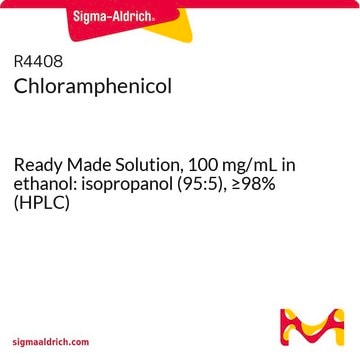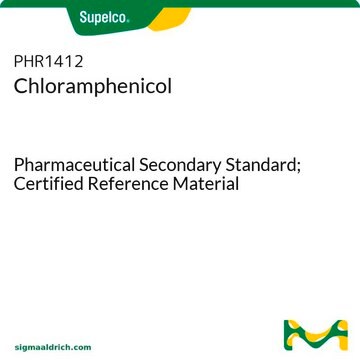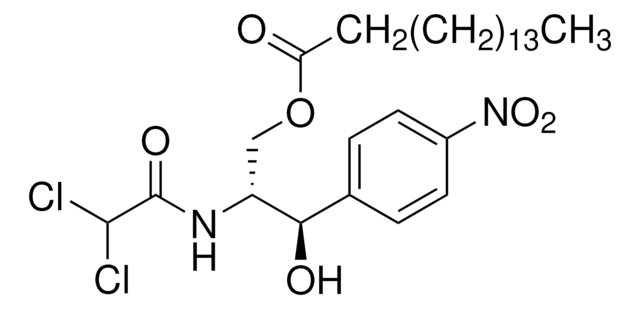C3175
Chloramphenicol-Water Soluble
powder, suitable for cell culture, BioReagent
동의어(들):
Chloramphenicol, Chlornitromycin, Chlorocid, Chloromycetin, Cloramfenicol, D-(−)-threo-2-Dichloroacetamido-1-(4-nitrophenyl)-1,3-propanediol, D-(−)-threo-2,2-Dichloro-N-[β-hydroxy-α-(hydroxymethyl)-β-(4-nitrophenyl)ethyl]acetamide, Chloromycetin, D-threo-2,2-Dichloro-N-[β-hydroxy-α-(hydroxymethyl)-4-nitrophenethyl]aceta, Kloramfenikol
About This Item
추천 제품
제품명
Chloramphenicol-Water Soluble, powder, BioReagent, suitable for cell culture
제품 라인
BioReagent
Quality Level
양식
powder
기술
cell culture | mammalian: suitable
solubility
H2O: 50-500 mg/mL (stock solution)
PBS: 50-500 mg/mL (stock solution)
other salt solutions: not recommended
항생제 활성 스펙트럼
Gram-negative bacteria
Gram-positive bacteria
mycobacteria
mycoplasma
동작 모드
protein synthesis | interferes
애플리케이션
- as a supplement in Luria-Bertani (LB) medium to culture Escherichia coli
- as a supplement in LB agar to culture Citrobacter rodentium
- to culture Toxoplasma gondii
생화학적/생리학적 작용
포장
기타 정보
신호어
Danger
유해 및 위험 성명서
Hazard Classifications
Carc. 2 - Eye Dam. 1 - Repr. 2
Storage Class Code
11 - Combustible Solids
WGK
WGK 3
Flash Point (°F)
Not applicable
Flash Point (°C)
Not applicable
개인 보호 장비
Eyeshields, Gloves, type P2 (EN 143) respirator cartridges
가장 최신 버전 중 하나를 선택하세요:
시험 성적서(COA)
이미 열람한 고객
문서
Antibiotic kill curve is a dose response experiment in which mammalian cells are subjected to increasing amounts of selection antibiotic
자사의 과학자팀은 생명 과학, 재료 과학, 화학 합성, 크로마토그래피, 분석 및 기타 많은 영역을 포함한 모든 과학 분야에 경험이 있습니다..
고객지원팀으로 연락바랍니다.








